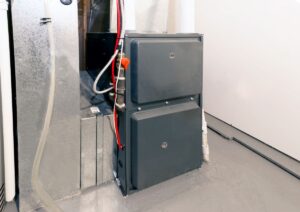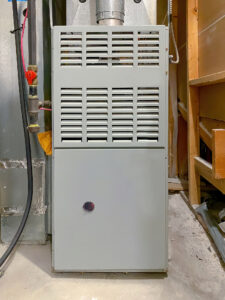Are Gas or Electric Furnaces Better in the D.C. Area?
 Furnaces are one of the most popular heating options in the Washington, D.C., area, providing consistent warmth during winter’s below-freezing temperatures.
Furnaces are one of the most popular heating options in the Washington, D.C., area, providing consistent warmth during winter’s below-freezing temperatures.
But when choosing a furnace for your home, should you go with gas or electric? The answer depends on several factors.
How Do Electric Furnaces Work?
Electric furnaces use heating elements similar to those in electric stoves to generate warmth. When the thermostat signals a need for heat, electricity flows through the heating coils, warming the air inside the unit. A blower then distributes this heated air throughout the home’s ductwork.
Pros & Cons of Electric Furnaces
While electric furnaces have their advantages, they also come with a few drawbacks.
Pros
- Lower installation cost
- No risk of carbon monoxide leaks
- Less maintenance
- More environmentally friendly
- Longer lifespan than gas furnaces
Cons
- Higher operating costs
- Slower heating compared to gas furnaces
- May struggle in extreme cold
How Do Gas Furnaces Work?
Gas furnaces operate by burning natural gas to generate heat. When the thermostat calls for warmth, the furnace’s burner ignites the gas, creating hot combustion gases.
These gases pass through a heat exchanger, warming the air before it’s circulated through the home’s ductwork.
Pros & Cons of Gas Furnaces
Gas furnaces are highly effective, but they also require proper maintenance to guarantee safety and efficiency.
Pros
- Heat faster than electric furnaces
- Lower monthly heating costs
- Works well in extreme cold
Cons
- Requires a gas line connection
- More expensive to install
- More maintenance is required for safety
- Can contribute to poor indoor air quality if not maintained
Factors To Consider When Choosing a Furnace
Choosing the right furnace for your home depends on more than just the type of fuel. Here’s what to consider before deciding:
Installation Costs
Gas furnaces tend to have a higher installation cost than electric models, primarily because they require a gas line.
On average, electric furnace installation in the Washington, D.C., area costs between $2,000 and $8,000, while gas furnace installation can cost between $3,800 and $12,000.
Rebates
Local and federal rebate programs can help offset the initial costs of furnace installation. The Inflation Reduction Act offers federal tax credits for ENERGY STAR®-certified gas furnaces with an AFUE rating greater than or equal to 97%.
Some utility providers in Washington, D.C., may offer additional rebates for energy-efficient furnace installations of both types.
Energy Efficiency
Furnace efficiency is measured by AFUE (annual fuel utilization efficiency), which indicates how much of a furnace’s fuel is converted into usable heat. AFUE ratings can be misleading when comparing gas and electric furnaces, as it’s not an apples-to-apples comparison.
Electric furnaces always have an AFUE of 100% because they convert all the electricity they consume into heat, with no energy lost. Gas furnaces burn fuel, so even the most efficient models (up to 98% AFUE) naturally lose some energy through exhaust gases.
AFUE is useful for comparing gas furnaces to each other, but it’s not the best way to compare gas and electric models.
Operating Costs
It’s important to consider how much it will cost to run your furnace. While electric furnaces are more efficient, natural gas is generally cheaper than electricity in Washington, D.C. Over time, gas furnaces tend to be the more cost-effective option.
Lifespan
Electric furnaces generally last 20 to 30 years, while gas furnaces last 15 to 20 years. This is because electric furnaces have fewer parts and no combustion process that puts more wear and tear on the system.
Maintenance
Both gas and electric furnaces require annual tune-ups in the fall to keep them running efficiently and prevent breakdowns during peak heating season.
However, gas furnaces require additional safety checks to detect potential carbon monoxide leaks and ensure proper ventilation.
Choose Us for Furnace Installation in the Washington, D.C., Area
Whatever type of furnace you choose, Len The Plumber Heating & Air offers expert heating installations. We provide upfront pricing and financing options on approved credit, so you can fit any type of furnace into your budget.
Contact us today to schedule expert furnace installation in the Washington, D.C., area.
From Len The Plumber Heating & Air
 Coupons
Coupons 



